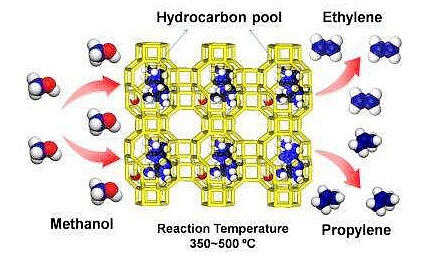News
The chemical composition and structure of various molecular sieves
The chemical composition and structure of various molecular sieves

1. The chemical composition of molecular sieve. The porous molecular sieve material composed of aluminosilicate is generally called molecular sieve, and its chemical composition is:
Mr/n[(AlO2)x·(SiO2)y]·zH2O
In the formula, M is a metal cation; n is its valence (different molecular sieves, M represents different metal cations, in experience, M can be metals such as Na, K, Ca, Mg, etc., or organic amines or composite ions ), when the valence of the metal ion is n=1, the number of atoms of M is equal to the number of atoms of Al, if n=2, the number of atoms of M is half of the number of Al atoms; x is the number of molecules of AlO2, when the value of x in the formula At different times, the molecular sieve has different acid resistance, thermal stability and catalytic activity. Generally, the larger the value of x, the higher the acid resistance and thermal stability; y is the number of SiO2 molecules; z is the number of water molecules.
Because AlO2 is negatively charged, the presence of metal cations can keep the molecular sieve neutral.
Generally, the classification of zeolite molecular sieves is mainly based on the difference of the silicon-to-aluminum ratio x:y in its chemical composition. For example, the silica-to-aluminum ratios of zeolite A, zeolite X, zeolite Y and mordenite are 1.5-2, 2.1-3.0, 3.1-6.0, and 9-11, respectively.
2. It is composed of aluminum phosphate molecular sieve and microporous phosphate. In 1892, as a new member of the molecular sieve family-phosphate molecular sieve AlPO4-n (n is the number) came out. Phosphate molecular sieves not only include AlPO4-n molecular sieves with large, medium and small pores, but also 13 kinds of elements Li, Be, B, Mg, Si, Ga, Ge, Ti, Mn, Fe, Co, Zn, Including main group metals and transition metals and non-metals introduced into the microporous framework to generate six types of microporous compounds with 24 types of open framework structures: AlPO4-n, SAPO-n, MeAPO-n, MeASO-n, ElAPO-n With ElAPSO-n. The latter four types can also generate derivatives of multiple elements, so the total number of members of this family of microporous compounds has reached more than 200.
Zeolite Products
Latest News
Contact Us
Contact: Ms.Anna Fei
Phone: +86-15036079565
Tel: +86-371-64368520
Email: info@meiqicn.com
Add:BEISHANKOU TOWN, GONGYI CITY, HENAN, CHINA 451200
